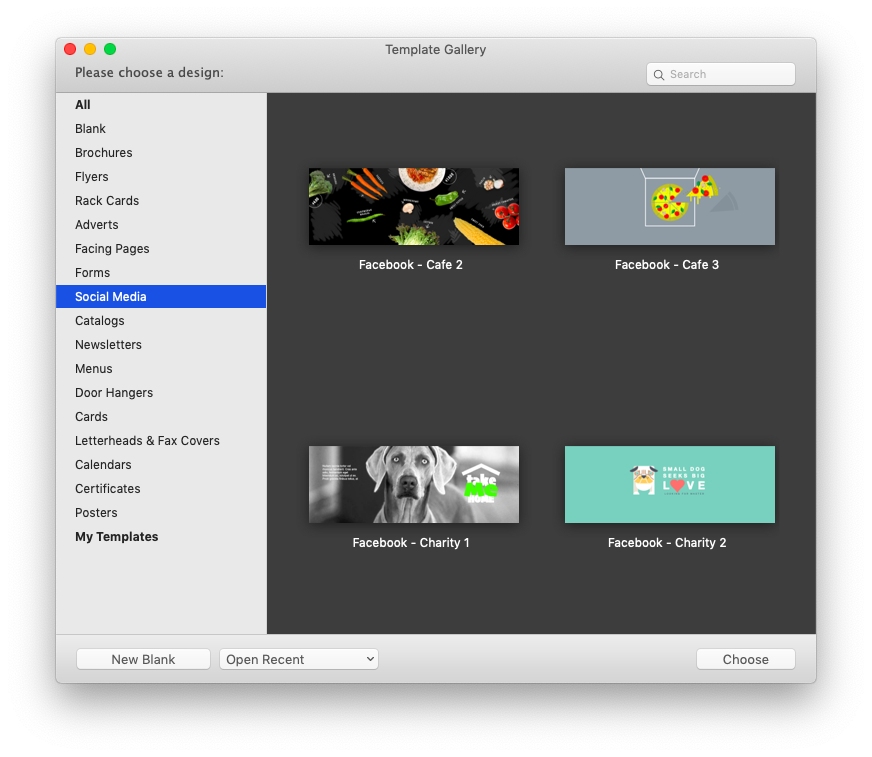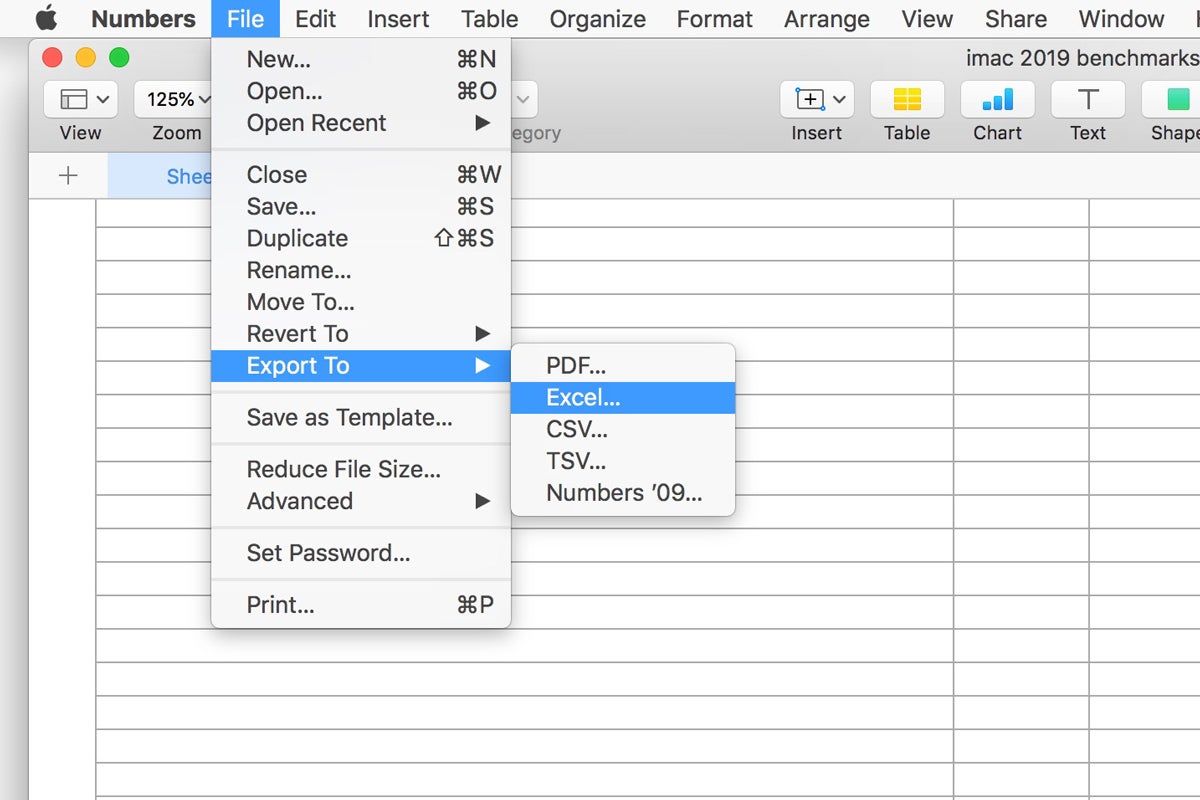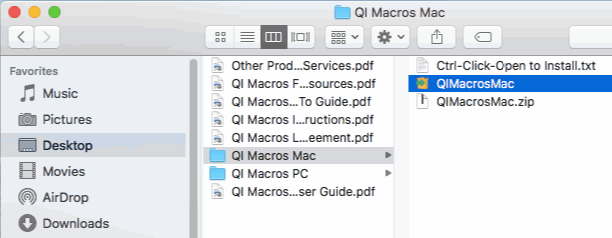Lesson 20: Installing Software on Your Windows PC
- Installing Excel On Macbook Air
- Install Excel On Mac
- Installing Microsoft Excel On Mac
- Installing Excel Macros
- Installing Excel On Mac
/en/basic-computer-skills/starting-a-computer-in-safe-mode/content/
Installing software on your Windows PC
Your computer allows you to do some really amazing things. Digital photo editing, sophisticated computer gaming, video streaming—all of these things are possible because of different types of software. Developers are always creating new software applications, which allow you to do even more with your computer.
- I have installed Office but I cannot open any documents on any of the programs. I can't open documents I have previously saved with MS Word or Excel 2010 and I can't open a new/blank document with 2013. I just get a message saying 'Microsoft Word/Excel/Powerpoint has stopped working' and then the program closes itself down.
- Looking for automatic data sync capabilities or a plug-in that works on Macs and Excel Online? Download XL-Connector. Installing XL-Connector. It’s best to stop Excel before you do the install, but if it’s running – you’ll need to restart it after the installation is completed.
Most familiar Office Fluent Control Identifiers are compatible with Office for Mac. Some might not be available. For commands that are compatible with Office 2016 for Mac, see idMSOs compatible with Office 2016 for Mac. Support for COM add-ins that use custom ribbon controls: Available: Office 2016 for Mac doesn't support third-party COM add-ins. STEP 1: The first step is to check the Excel bit version that you have on your PC. To check the bit version, you need to go and open any Excel workbook and go to File Help and on the far right-hand side, you will see the Version and the bit number in brackets, either (32-bit) or (64-bit). Once you know this, close out of Excel completely!
Installing from a CD-ROM
From the mid-1990s through the late 2000s, the most common way to get new software was to purchase a CD-ROM. You could then insert the disc, and the computer would walk you through the installation.
Now, almost all software has moved away from this model. Many new computers no longer include a CD-ROM for this reason. However, if you do need to install software from a CD-ROM, simply insert the disc into your computer, then follow the instructions.
Installing software from the Web
Today, the most common way to get new software is to download it from the Internet. Applications like Microsoft Office and Adobe Photoshop can now be purchased and downloaded right to your computer. You can also install free software this way. For example, if you wanted to install the Google Chrome web browser, you can visit this page and click the Download button.

The installation file will be saved to your computer in .exe format. Pronounced dot e-x-e, this is the standard extension for installation files on Windows computers. You can follow the steps below to install an application from an .exe file.
Locate and download an .exe file.
Locate and double-click the .exe file. (It will usually be in your Downloads folder.)
A dialog box will appear. Follow the instructions to install the software.
The software will be installed. You can now open the application from the Start menu (Windows 7) or the Start Screen (Windows 8).
Tips for finding software
In our experience, the easiest way to find new software is to search the Web. For example, if you were looking for a way to edit some personal photos on your computer, you could run a Google search for free photo-editing software. If you're not exactly sure what kind of software you're looking for, try describing the tasks you want to complete. For example, if you wanted a way to create to-do lists and organize your appointments, you might search for something like free calendar organizer software.
The Windows Store
If you're using Windows 8, you can download and install software from the Windows Store. The Windows Store is meant to simplify the process of locating and installing software from third-party developers—when you find an app in the Windows store, you won't have to do any extra work to install it.
/en/basic-computer-skills/installing-software-on-your-mac/content/
PrevNext
When searching a Perl module, sooner or later you will end up on one of two sites sites providing information about CPAN modules.Both Meta CPAN, and search.cpan.orgwill show you a link to download the module, but in most cases that's not what you need.
So how do you really install Perl modules from CPAN?
(As always, some people will disagree with the recommendations below, they probably have not readthe article of Dave Cross, or reachedother conclusions.)
In most cases the installation of a CPAN module works just as installing an app from the Apple Appstore or the Google Play.Except, that these modules are all open source and free software.
Depending on the Operating System and which Perl distribution you have, the specific instructions differ.In order to make the examples clearer, let's try to install the module called Try::Tiny.
It has its description both on Meta CPAN and onsearch.cpan.org. Both have the Download linksthat we won't click on.
Cases
Strawberry Perl or DWIM Perl on Windows
Strawberry Perl,comes with an already configured cpan client. We will use this client to install modules directly from CPAN:
Open the Command Window (Start -> Run -> type in cmd) When you get the 'DOS' prompttype in cpan Path::Tiny.Please note, module names are case sensitive,so typing cpan path::tiny or cpan PATH::TINY will not work!
Also, in normal circumstances, the cpan client is expecting the full name of the module, not one part of the name,and not the name of the zip-file.So cpan Path or cpan Tiny will attempt to install different modules.(One called Path, the other one called Tiny.)
What you need to do is type in:

ActivePerl
There is a graphical tool for this as well, but it might be more simple just to open theCommand Window (Start -> Run -> type cmd). When you get the 'DOS' prompt, type inppm install Path::Tiny. Please note, this too is case sensitive!
The problem you might encounter is that this command uses the 'CPAN store' of ActiveState that for varioustechnical and legal reasons does not carry all the the modules from CPAN. It can also be out-of datecarrying older versions of the modules. On newer versions of ActivePerl you can also enable a realcpan-client that will access the CPAN server just as it does in the case of Strawberry/DWIM Perl above.
GitPerl
TBD.
Cygwin Perl
TBD. Cygwin.
Debian/Ubuntu Linux
If you have root rights, and if you use the system perl located in /usr/bin/perl,then probably the best is to try to install from the package management system of your Linux distribution.If you don't have root rights, you could ask your system administrator to do it on your behalf.
Apparently there is a nice way to find out if a Perl module is on Debian or Ubuntu.
If the module you are looking for is not available in the repositories of your Debian/Ubuntu/etc. distribution(and there are only about 10% of the modules available), or if you don't use the system Perl,then you can follow the instructions with cpan/cpanm below.
To install for the system-perl as root you can use either aptitude or apt-getdepending on your personal preferences.
If the name of the module in Perl-land is Path::Tiny, then the name of the package in Debian/Ubuntu-landis most likely going to be libpath-tiny-perl.
RedHat/Fedora/CentOS Linux
Just as in the case of Debian/Ubuntu above, the instructions here are relevant ifyou use the system perl located in /usr/bin/perl and if you haveroot rights:
Using the package management system:

As Dave Cross mentioned, if you don't know the name of the RH package, you can also use
The subtle difference is that the former installs the named RPM whereas the secondinstalls the RPM that provides the named Perl module.
So if you would like to install the Path::Tiny module then the second command isactually the better one.
If your vendor does not carry this Perl package, you can add other RPM repositories.Check out EPEL, andthe Magnum Solutions CPAN RPM Repositorymaintained by Dave Cross.
Mac OSX
Follow the instructions with cpan/cpanm below.
Using the cpan client
Installing Excel On Macbook Air
While the cpan program comes with most operating system,and it works well after some configuration, there is probably a better,and certainly lighter solution called cpan minus or cpanm.
Using cpanm
This is for Linux and OSX systems. (For Windows, see described above.)
First, if you don't have it installed yet,then install cpan minus by typing
Once it is installed type:
If you still have questions related to the installation of Perl modules,please ask them below! I'll try to update this articleto answer those questions and to explain other situations.
Specific instructions for
TODO
Separate explanation of installing using cpan/cpanm as root stepping on the system perl, using local::lib to install in a private directory while using system perl.
Using a manually compiled perl.
Using perlbrew, creating 'virtual environments'.
Published on 2014-03-13
Comments
In the comments, please wrap your code snippets within <pre> </pre> tags and use spaces for indentation.Please enable JavaScript to view the comments powered by Disqus.comments powered byInstall Excel On Mac

Installing Microsoft Excel On Mac

Installing Excel Macros
DisqusInstalling Excel On Mac
